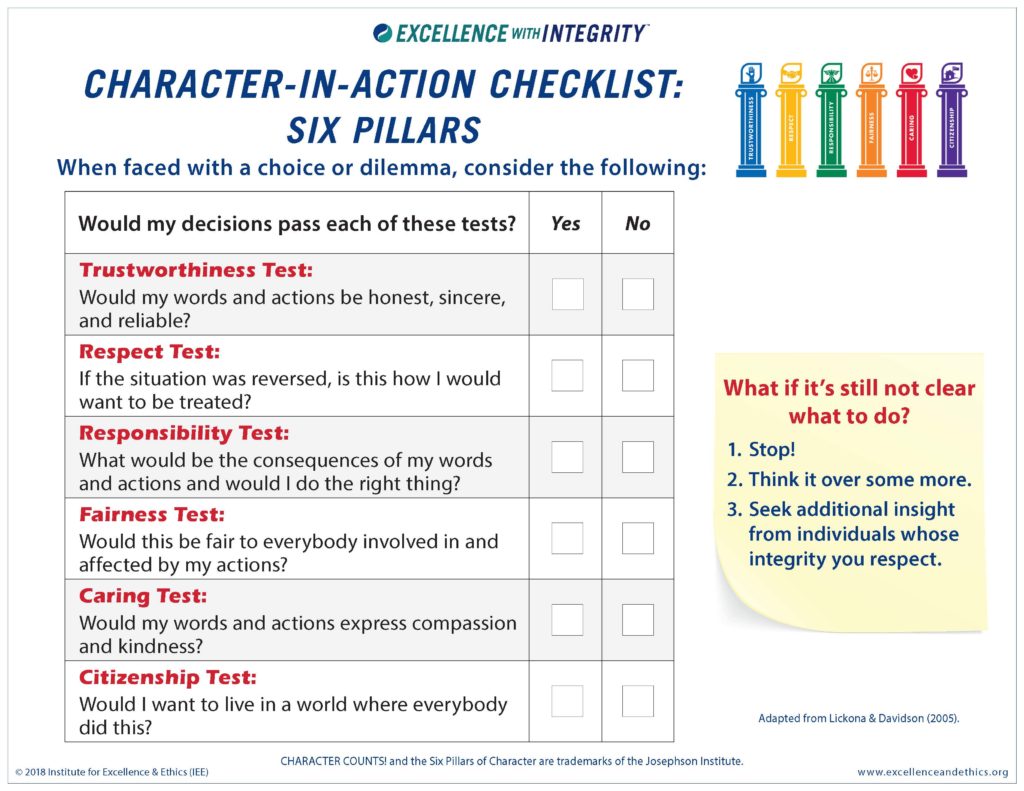
Integrity is all about the choices we make and holding ourselves accountable to being honest and doing the right thing. While this can be challenging for youth to understand, exploring scenarios where one’s integrity is involved helps them process and make good choices.

Regulate emotions, attitudes, and actions, and resist negative emotions and impulses.
Make decisions based on rationality, ethics, and effectiveness.
Acquire, remember, understand, and apply knowledge.
Activity
(Need small object that can easily be thrown or caught)
Directions
Process the Activity – You can’t have a little bit of integrity; you either have it or you don’t. When you are looking to others to see what you can get away with, that’s a time when you need to ask yourself some questions to make sure you are making the right choice, not just the easy choice.
Start Here if Not Using Optional Activity
We all make hundreds of decisions each day. Sometimes determining the right choice is easy, but on occasion we have to make a decision where the right choice either isn’t as clear, or is otherwise difficult to make. Ask students to share an example of a difficult decision they have made.
In these moments, we sometimes look around to see what others are doing and what we can get away with, like in the Integrity Ball game. A better idea is to have a strategy that helps us make the right decision. The tool we use to help us make hard decisions is call the Character in Action Checklist: Six Pillars.

The Character in Action Checklist: Six Pillars consists of six questions that when applied to a difficult decision can help us determine the right choice to maintain our integrity and trustworthiness. Practice applying the questions to the hypothetical situations below.
(Facilitator Note: Sometimes you must play Devil’s Advocate to help students practice using the checklist. For example, most students know that if someone gives them incorrect change, they should give the change back. Thus, a follow-up question is sometimes in order, “Does anyone know a person who might not give the change back? What would they say to justify their decision? Does that justification pass the checklist questions?)
Hypotheticals:
Have students journal or discuss the following prompts in small groups to reflect on this activity:
Encourage parents to watch this short video with their kids.
https://www.youtube.com/watch?v=CfFAAGjt5lo
After watching the video, parents and students should write three commitment cards to one another. Parents keep the cards of their children, and kids keep the cards of their parents. When the promise is filled, the card is returned. (Note: you can order promise cards from Because I Said Would if desired, but it is not necessary. Any notecard will suffice).